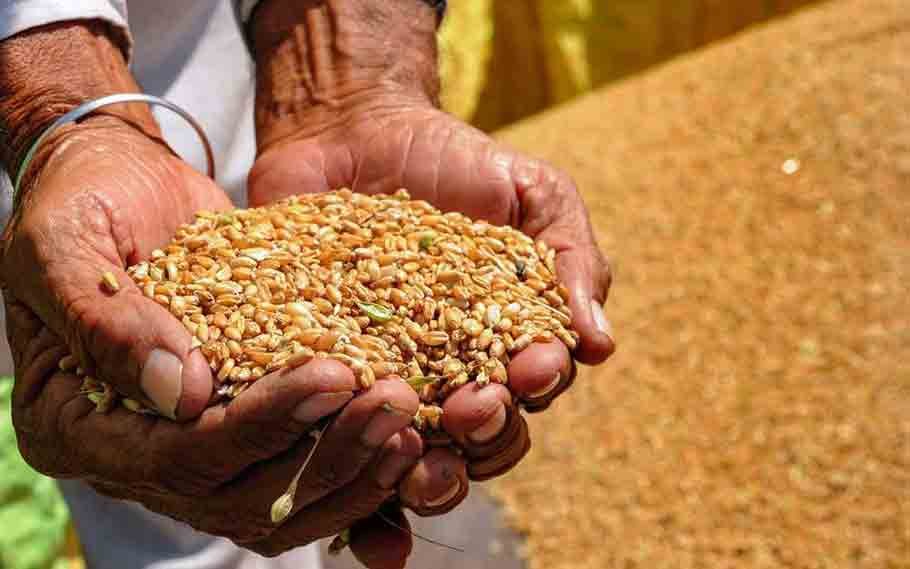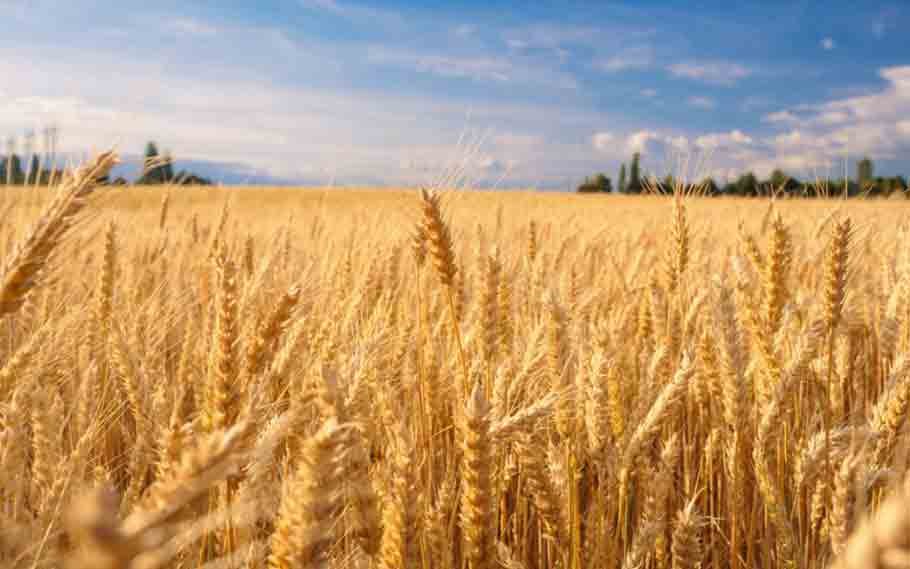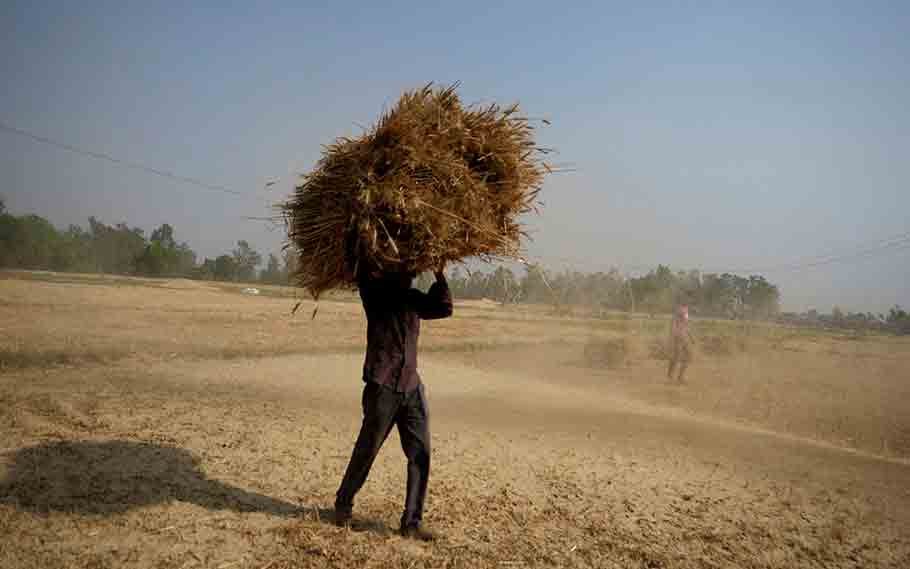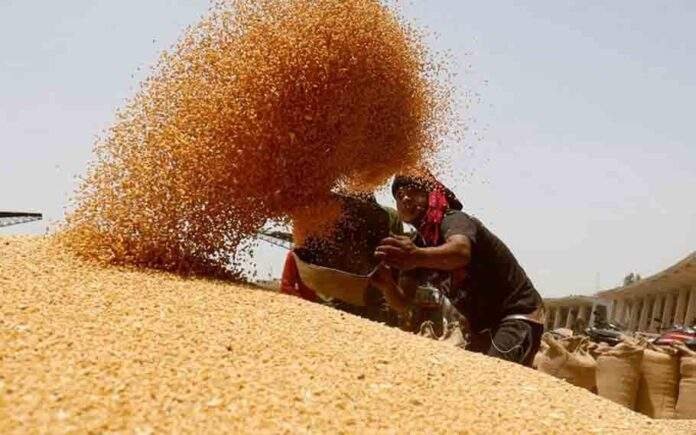Wheat exports are restricted in India. When global markets reopened on Monday, international prices had risen nearly 6% per bushel (60 pounds or one million kernels or 27.21 kg).
Prices in different states fell drastically by 4-8 percent: Rs 200-250 per quintal in Rajasthan, Rs 100-150 in Punjab, and around Rs 100 in Uttar Pradesh.

Moreover, worldwide wheat prices soared over 60% in 2022 due to Russia’s invasion of Ukraine on February 24 and the resulting supply disruption; Russia and Ukraine combined account for about a third of global wheat exports.
India’s unexpected restriction, which accounts for approximately 5% of global wheat exports, pushed prices even higher.
However, on Monday, corn futures in Chicago climbed 5.9% to $12.47 per bushel, the highest level in two months. The previous trading session’s closing price on May 13 — the day India issued the embargo — was $11.77 per bushel.
According to the Department of Commerce portal of the Indian government, the country exported 66.41 lakh tonnes of wheat in the first 11 months of the fiscal year 2021-22 (April 2021 to February 2022). (1 tonne is 1,000 kgs or 2,204.6 pounds).
The latest US Department of Agriculture report from May 2022 predicts wheat exports from India at 10 million metric tonnes in the 12 months from July 2021 to June 2022. (1 tonne is 2,000 pounds).
During that time, total world wheat exports were estimated to be 201.5 million metric tonnes.
The Indian government believes that roughly 45 lakh metric tonnes of wheat have been contracted for export in the current fiscal year, which runs from April 2022 to March 2023.
In April 2022, 14.63 lakh metric tonnes were exported, a significant increase above the 2.43 lakh metric tonnes exported the previous month.
Furthermore, 95,167 metric tonnes of atta were exported in April this year, which was about four times the 25,566 MT in April 2021.
India’s wheat export decision met dissatisfaction by G-7 countries
India’s decision was also met with dissatisfaction by the Group of Seven (G-7) countries. German Agriculture Minister Cem Ozdemir claimed the export limitation would “worsen the crisis” after a meeting of G-7 agriculture ministers in Germany. “It will deepen the problem if everyone starts imposing export limits or closing markets,” Ozdemir said during a press conference in Stuttgart on Saturday.

The decision was defended by India. During a media briefing on Saturday, Union Food Secretary Sudhanshu Pandey claimed the restriction was “basically due to the price increase.”
In the calendar year 2022, retail inflation has been above 6% for four months in a row, with the April reading reaching 7.79 percent, much beyond the upper band of the RBI’s inflation goal of 6%.
Atta from PDS has a weight of 0.17 in the Consumer Price Index, while wheat/atta from other sources has a weight of 2.56.
The impact of India’s export prohibition, according to research specialists, will be felt disproportionately by low-income developing countries. Except for India and Australia, most Asian economies rely on imported wheat for domestic consumption and are vulnerable to rising wheat prices globally, according to Nomura Global Markets Research, even if they do not directly import from India.
Bangladesh would bear the burden, according to Nomura. Bangladesh was the largest buyer of Indian atta in 2021-22, importing 38.04 lakh tonnes. Other major importers of Indian wheat included Sri Lanka (5.48 lakh tonnes), the United Arab Emirates (4.24 lakh tonnes), Indonesia (3.66 lakh tonnes), the Philippines (3.52 lakh tonnes), and Nepal (2.90 lakh tonnes).
Nomura also stated that the impact on domestic food inflation in India will be minimal.
“This export embargo is a precautionary measure that may keep local wheat prices from rising significantly; nonetheless, with domestic wheat production likely to be hampered by the heatwave, local wheat prices are unlikely to fall significantly.”
“If India’s wheat embargo results in higher prices for replacements like rice, other food prices could rise,” the report warned.
The ban serves three purposes, according to Commerce Secretary BVR Subrahmanyam: i) maintaining the country’s food security, ii) assisting those in need; if countries make specific requests, the Indian government will respond, and iii) maintaining India’s reliability as a supplier by not breaching any existing contracts.
“So, if we say that around 1.6 or 1.7 million tonnes have gone out, we’re still willing to let another 2.5 million (tonnes) go if there are prior book valid orders with a letter of credit,” he said on a Saturday media briefing.

Also Read: LANDSLIDES, WATERLOGGING HIT TRAIN SERVICES ON SILCHAR-GUWAHATI












